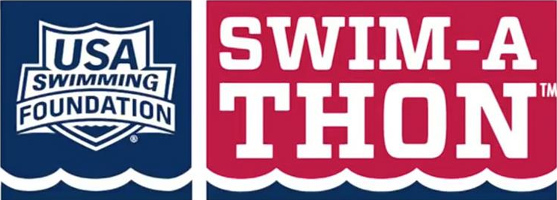Swim meets are a great family experience. They're a place where the whole family can spend time together.
Listed below are some very in-depth guidelines geared to help you through your first couple of swim meets. It may seem a little overwhelming, but we tried to be as specific and as detailed as we possibly could. If you have any questions, please ask your coach.
Meets:
- BCAC athletes are expected to participate in competitions.
- After the first meet each month, a coaching fee of $7 will be added to each participant’s invoice for each meet/game/tournament. Championship meets and Championship tournaments will have a $20 added coaching fee.
- Participants are responsible for all fees associated with the meets/games/tournaments for which they register. If an athlete fails to attend or participate in an event for which they have registered, they will be responsible for all fees associated with that event.
BEFORE THE MEET STARTS
- Arrive at the pool at least 15 minutes (more like one hour if you want your choice of seats) before the scheduled warm-up time begins. This time will be listed in the meet information on our website and emailed out a few days before the meet.
- Upon arrival, find a place to put your swimmer's blankets, swim bags and/or sleeping bags. The team usually sits in one place together, so look for some familiar faces.
- Find the coaches to check-in. Usually, parents are not allowed on deck so this may be a responsibility of your swimmer or your swimmer’s coach. Make sure your swimmer checks in with his or her coach! Check for special posted instructions in the check-in area.
- Most of the meets are "pre-seeded" and no additional check-in is required. You and your swimmer can find heat and lane assignments by purchasing a program.
- Sometimes one will need to circle the swimmer's name or "#" before each swimmer's name, in each event he or she is swimming, that day. If this is not done, the swimmer will not be allowed to swim that event. Check-in is required so that the people running the meet know who is actually at the meet. After check-in, the meet administrators "seed" the swimmers into heats. Heat and lane assignments will be posted, so be sure your swimmer knows where to look!
- Most of the meets are "pre-seeded" and no additional check-in is required. You and your swimmer can find heat and lane assignments by purchasing a program.
- Heat Sheets (sometimes called Psyche Sheets) are usually available for sale in the lobby or concession area of the pool. It lists all swimmers in each event in order of "seed time". When the team entry is sent in, each swimmer and his/her previous best time (up to the date that the entry was submitted) in that event is listed. If the swimmer is swimming an event for the first time, he/she will be entered as a "no-time" or "NT". A "no-time" swimmer will most likely swim in one of the first heats of the event. A heat sheet may be available close to the start of the meet that lists the actual heat and lane a swimmer will be competing in.
- Once they've checked in with the coaches, write or have the swimmers write each event on his or her arm with a Sharpie. This helps him/her remember what events he/she is swimming and what event number to listen or watch for and also helps meet organizers to get them to the right place at the right time if they get confused. You want to include the Event (E), Heat (H), Lane (L) and Stroke (S). The way to write them out is...
E H L S # # # [stroke name] # # # [stroke name] # # # [stroke name]
- Your swimmer now gets his/her cap and goggles and reports to the pool and/or coach for warm-up instructions. It is very important for all swimmers to warm-up with the team. A swimmer's body is just like a car on a cold day-he/she needs to get the engine going and warmed-up before he/she can go all out.
- After warm-up, your swimmer will go back to the area where his/her team is sitting (or with you if your swimmer is younger and not comfortable sitting away from you) and wait there until his first event is called. This is a good time to make sure he/she goes to the bathroom if necessary, gets a drink, or just gets settled in.
- The meet will usually start about 10-15 minutes after warm-ups are over.
- According to USA Swimming rules (because of insurance purposes), parents are not allowed on deck unless they are serving in an official capacity. Similarly, all questions concerning meet results, an officiating call, or the conduct of a meet, should be referred to a coach. He or she in turn, will pursue the matter through the proper channels.
AFTER THE MEET STARTS
It is important for any swimmer to know what event numbers he/she is swimming (again, why they should have the numbers on their arm). He/she may swim right away after warm-up or they may have to wait awhile.
- Most meets are computerized. There are generally two ways a swimmer gets to his/her lane:
- A swimmer usually reports directly to his/her lane for competition a number of heats before he/she actually swims. Check with your swimmer's coach for specific instructions.
- In some novice meets, a swimmer's event number will be called, usually over the loudspeaker, and he/she will be asked to report to the "clerk of course" or “bullpen”. Swimmers should report with his/her cap and goggle.
- Generally, girls events are odd-numbered and boys events are even-numbered. Example: "Event #26, 10-Under Boys, 50 freestyle, report to Clerk of Course." The "Clerk of Course" or “bullpen” area is usually where all swimmers checked in before the warm-up.
- The clerk will usually line up all the swimmers and take them down to the pool in correct order. You can expect at least 4-8 heats of each event.
- The swimmer swims his or her race.
- After each swim:
- He/she is to ask the timers (people behind the blocks at each lane) his/her time.
- Depending on the coaches instructions, the swimmer may be asked to do some recovery swimming if a "warm down" pool or lanes are available.
- The swimmer should then go immediately to his or her coach. The coach will discuss the swim with each swimmer. Some coaches may wish to talk with the swimmer before her recovery swim.
- Generally, the coach follows these guidelines when discussing swims:
- Positive comments or praise
- Suggestions for improvement
- Positive comments
- Things you, as a parent, can do after each swim:
- Tell them how great they did! The coaching staff will be sure to discuss stroke technique with the swimmer. You need to tell them how proud you are and what a great job they did.
- Take him back to the team area and relax.
- This is another good time to check out the bathrooms, get a drink or something light to eat.
- The swimmer now waits until his next event is called and starts the procedure again. When a swimmer has completed all of her events she and her parents get to go home. Make sure, however, you, as a parent, check with the coach before leaving to make sure your swimmer is not included on a relay. It is not fair to other swimmers who may have stayed to swim on a relay where your swimmer is expected to be a member and she is not there.
- Results are usually posted somewhere in the facility. Awards are often gathered for a team and given to the coach at the end of the meet. The coach will give the awards to the swimmers at a later time.




